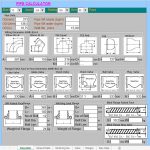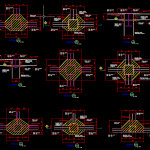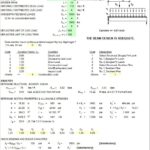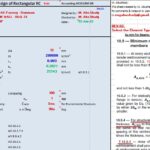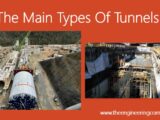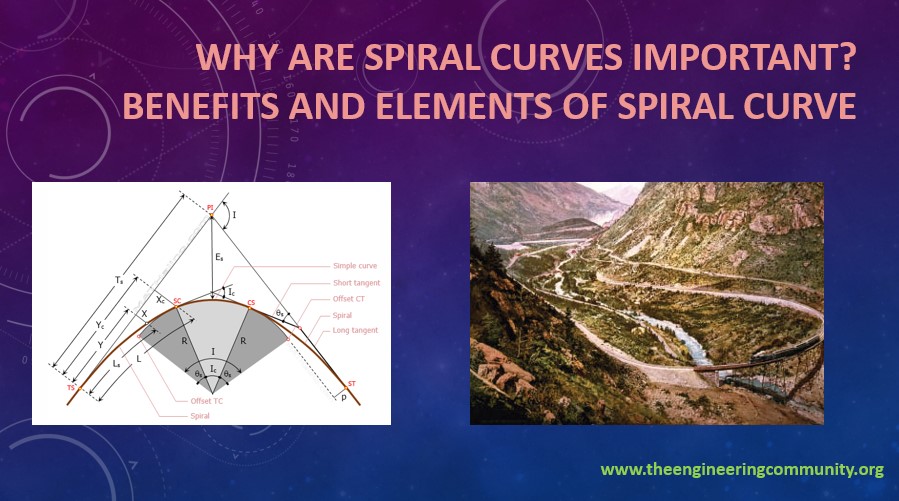
Why Are Spiral Curves Important? Benefits And Elements Of Spiral Curve
12 March 2023Table of Contents
Why Are Spiral Curves Important? Benefits And Elements Of Spiral Curve
1. Introduction:
Spiral curves are an important feature in the design and construction of roads and highways. They are used to provide a smooth and gradual transition between two straight sections of road. They allow vehicles to maintain a consistent speed and direction.
Spiral curves are an essential component of highway design. They improve safety, increase traffic flow, and reduce wear and tear on vehicles and road surfaces.
2. Spiral Curves Benefits:
One of the primary benefits of spiral curves is improved safety. When a road or highway changes direction suddenly, it can be difficult for drivers to navigate the turn safely. Spiral curves provide a more gradual transition, reducing the risk of accidents caused by sudden changes in direction or speed. This is especially important on highways, where vehicles are traveling at high speeds and any sudden changes can have serious consequences.
Another benefit of spiral curves is that they increase traffic flow. When a road or highway has a series of sharp turns, it can slow down traffic and cause congestion. Spiral curves allow vehicles to maintain a more consistent speed and direction, reducing the need for drivers to slow down and speed up constantly. This improves traffic flow and reduces congestion, making it easier for people to get where they need to go.
Spiral curves also reduce wear and tear on vehicles and road surfaces. When a vehicle has to make sudden turns, it puts additional strain on the tires, suspension, and other components. This can cause increased wear and tear on the vehicle, leading to more frequent repairs and maintenance. Spiral curves reduce this strain by providing a smoother transition between sections of road, which reduces the amount of stress placed on the vehicle. This also helps to reduce the amount of damage that is done to the road surface, which can save money on maintenance and repairs in the long run.
3. Spiral curve length:
The length of a spiral curve is an important consideration in highway design, as it can affect a range of factors including driver comfort, vehicle wear and tear, and overall highway efficiency.
The length of a spiral curve is determined by several factors, including the radius of the curve, the desired speed limit, and the terrain.
In general, longer spiral curves provide a smoother transition between two straight sections of road, which can improve driver comfort and reduce wear and tear on vehicles. However, longer spiral curves also require more space, which can be a limiting factor in some areas.
One of the main benefits of longer spiral curves is increased driver comfort. When a vehicle transitions from a straight section of road to a curve, there is often a jarring sensation as the vehicle is forced to change direction quickly.
Longer spiral curves provide a more gradual transition, which can reduce this jarring sensation and make the driving experience more comfortable for passengers. This is especially important on highways, where high speeds can amplify the effects of sudden changes in direction.
Another benefit of longer spiral curves is reduced wear and tear on vehicles. When a vehicle makes sudden turns or changes direction quickly, it puts additional stress on the tires, suspension, and other components. This can cause increased wear and tear on the vehicle, which can lead to more frequent repairs and maintenance. Longer spiral curves reduce this stress by providing a smoother transition between sections of road, which can help to extend the life of the vehicle.
In addition to these benefits, longer spiral curves can also improve the overall efficiency of a highway. When a highway has a series of sharp turns or sudden changes in direction, it can slow down traffic and cause congestion. Longer spiral curves allow vehicles to maintain a more consistent speed and direction, which can help to reduce congestion and improve traffic flow. This can save time and fuel for drivers, as well as reduce emissions from idling or stop-and-go traffic.
4. Spiral Curve Elements:
The figure below illustrates the standard components of a spiral curve connecting tangents with a central circular curve. The back and forward tangent sections intersect one another at the PI.
The alignment changes from the back tangent to the entrance spiral at the TS point. The entrance spiral meets the circular curve at the SC point. The circular curve meets the exit spiral at the CS point.
The alignment changes from the exit spiral to the forward tangent at the ST point. The entrance and exit spiral at each end of the circular curve are geometrically identical.
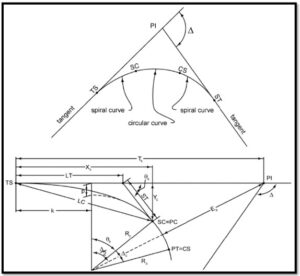
Below is a list of term and abbrievations of a spiral curve and the definition of each.
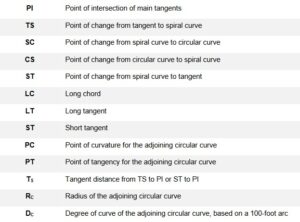
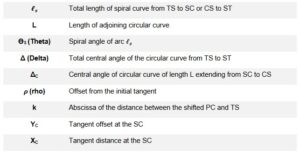
In conclusion, spiral curves are an essential component of highway design. They provide a smoother transition between sections of road, improving safety, increasing traffic flow, and reducing wear and tear on vehicles and road surfaces. When designing and constructing roads and highways, it is important to consider the benefits of spiral curves and incorporate them into the design to ensure that they are as safe and efficient as possible.
Suggested Read:
Road Spiral Curve (Clothoid Calculation) Spreadsheet
Highway Design – Introduction to Horizontal and Vertical Alignment

